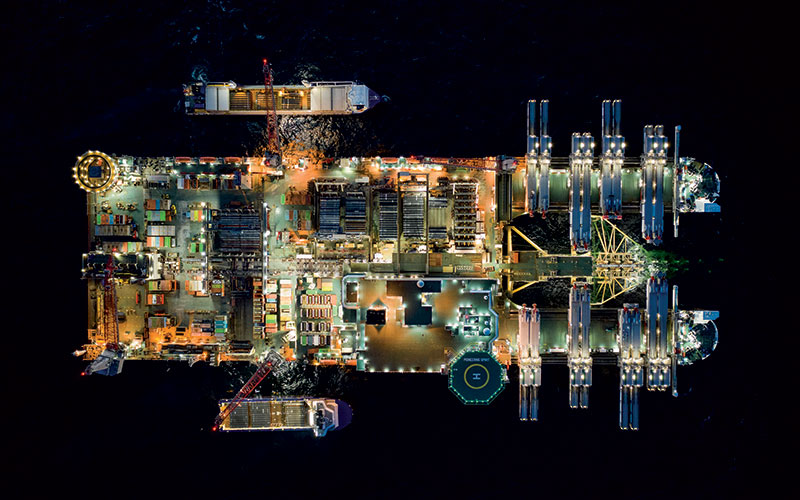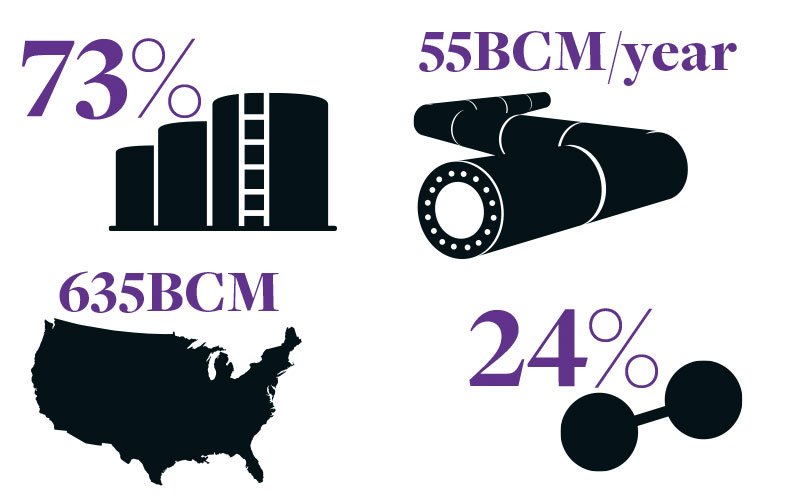The future of European gas
The giant Groningen gas field has been fuelling Europe’s energy needs for decades. As the Dutch wind down production, Christian Beasley at ZTP says Groningen’s volumes can be easily replaced

The significant 1959 discovery of the Groningen gas field – the tenth-largest in the world – had global ramifications: firing the starting gun for North Sea exploration, the UK’s Continental Shelf Act 1964, the formation of the Brent benchmark, and the economic phenomenon the ‘Dutch Disease’.
Production started in 1963 and increased to a peak of 87.7BCM in 1976. It supplied Benelux, France, Germany and the UK. Unlike other natural gas high calorific grades, it had a relatively high nitrogen content, resulting in lower calorific value.
In March 2018, after several small but damaging earthquakes, Dutch Prime Minister Mark Rutte announced that production would be phased out by 2030, later revised to 2022. What is the outlook for European gas post-Groningen?
Stepping out from big brother’s shadow
Natural gas is the low-carbon fuel of choice for reaching net zero. It is poised to plug power generation gap left by coal, as the non-weather-dependent choice. The necessity to transition away from coal-fired generation to meet climate goals is felt acutely in Germany.
The total gas demand in the EU was around 459BCM in 2019. The source of EU gas is shifting: EU production was down 12% YoY, with Groningen production decreasing to 23% YoY, whereas LNG imports increased by 42% YoY.
There is a strong correlation between GDP and gas demand. The IMF forecasts EU GDP to fall 7.1% in 2020, impacting demand for gas, while LNG demand is down 2.3% in the Northern hemisphere.
There is no clear single solution for plugging the gap in European supply demand. Instead there are multiple alternatives, including new gas infrastructure, such as Nord Stream, LNG cargoes and, in the longer term, hydrogen blending.

The beast from the East
The obvious alternative to Groningen would be Gazprom’s Nord Stream II and its 55BCM per year capacity, which roughly equates to Groningen’s production in 2011, or approximately double 2019 production. However, the Russian state-owned Nord Stream does not come without controversies.
The US worries over NATO nations’ reliance on Russian energy exports. Nord Stream II negates the need to transport natural gas through troubled Ukraine; in the event of a potential conflict, Russia could turn off the tap to NATO nations, similar to the strategy deployed against the Ukrainian Power Grid in 2015. During the past year, Nord Stream has been hit by multiple US sanctions, and there has been no offshore work since December 2019. However, Putin remains resolute that the pipeline will be operational from Q4 2020/Q1 2021.
Unattractive investments
Nord Stream is likely to be the last Northern European major hydrocarbon infrastructure investment we will witness. Given the EU’s push for hydrogen to be a central element in energy system integration, the existence of robust North Sea pipelines and Nord Stream II in the offing, there is likely to be no additional demand for further infrastructure.
Besides, major international financiers such as Blackrock, BNP Paribas and state sovereign funds have signalled an end to investments in
the carbon economy. Risking the billions required to develop new submarine pipelines is unlikely to be an attractive prospect for reputation-conscious and profit-hungry investment firms.
LNG imports?
In 2019 Europe imported 108 MCM of LNG, much of which was American and Qatari. Natural gas is a by-product of crude production. By 2019, the shale revolution enabled the US to become the world’s top crude producer and a significant LNG exporter. However, by the end of Q1 2020 OPEC+ had failed to agree product cuts, flooding global markets with cheap product and causing the WTI crude price to turn negative. As a result, the US rig count has dropped significantly since April, along with the source of cheap LNG.
Looking to the medium and long term, Europe cannot rely on the cheap US and Qatari LNG cargoes to feed demand when supply and pricing fundamentals remain so changeable.
A cleaner future
The rise of the corporate green agenda has seen increased demand for clean energy by industrial and domestic users alike. There is an extreme price premium placed on green gas, making it, for now, non-viable to plug a Groningen-sized hole. However, with technological advances, hydrogen blending may be a feasible option.
Keele University is currently, and successfully, conducting a six-month trial blending 20% hydrogen into the gas supply to feed 100 homes and 30 academic faculty buildings. The 20% blend is one of the highest concentrations in Europe and, if rolled out, could save 6m tonnes of CO2 – the equivalent of taking 2.5m cars off the road. Northern Gas Network and H21 have proven that the current gas network can transport 100% hydrogen. H21 aims to deliver 100% hydrogen (85TWh of energy) to an eighth of the’s UK gas users.
The future is bright but different
The future looks different. The discovery of another field the size of Groningen is highly unlikely, but does Europe need one?
In the short term, European gas storage is relatively full, affording a buffer and enough time for the Nord Stream II project to be completed this winter.
In the medium term, supply from LNG and Nord Stream pipelines and North Sea fields should alleviate any supply strains.
Longer-term, there will be some degree of hydrogen blending, most likely to start at a 20% blend and then increasing over time to 100% as part of a wider move to decarbonise heating, the economy and our lives.
By Christian Beasley, Risk and Market Analyst, ZTP






Follow us
Advertise
Free e-Newsletter